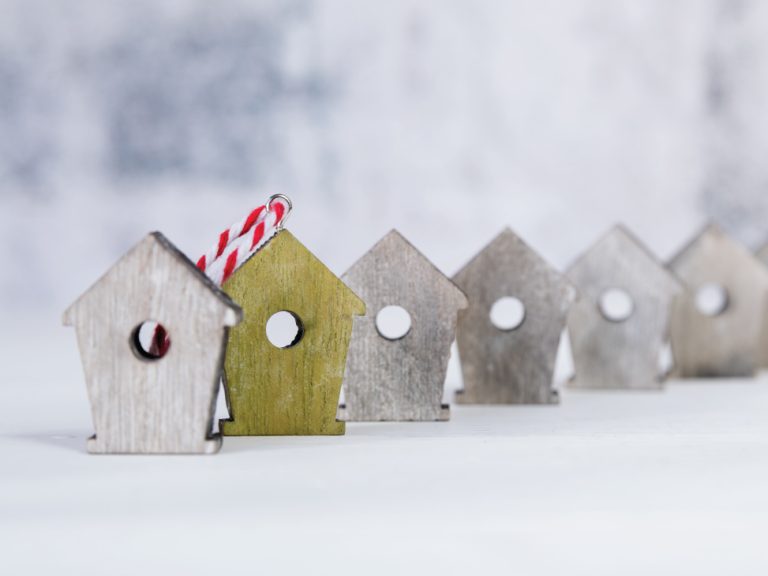Getting home loan is very BASIC now
Get a loan in under 5 mins

The West Bengal Housing Board (WBHB), established in 1972, has been a beacon of hope for residents seeking affordable and quality housing solutions across the state. Over the decades, WBHB has introduced numerous schemes targeting various income groups, striving to address the growing demand for residential spaces in both urban and rural areas.
This blog delves deep into the major housing schemes, their objectives, eligibility criteria, application processes, recent developments, and future projects that continue to reshape the housing landscape in West Bengal.
Table of Contents
The WBHB operates under the aegis of the Housing Department, Government of West Bengal, with a mission to provide sustainable and affordable housing. Since its inception, the board has completed over 35,000 housing units, catering to multiple income groups. It aims to ensure transparency, affordability, and inclusivity in its schemes, offering homes that align with the financial capabilities of the common citizen.
Suggested read: 2 BHK Housing Scheme in Telangana
The Gitanjali Housing Scheme was launched to address the housing needs of the Economically Weaker Sections (EWS) and the Low-Income Groups (LIG). This scheme provides affordable housing units in both rural and non-municipal urban areas.
Target Audience: Families with a monthly income of less than ₹10,000.
Features:
Funding Structure:
The construction costs for dwelling units on the beneficiary’s land are as follows:
For non-municipal, semi-urban areas:
The Nijashree Housing Scheme focuses on addressing the middle-income housing demand. It is one of WBHB’s flagship projects, catering to both Low-Income Group (LIG) and Middle-Income Group (MIG) families.
Features:
Eligibility:
Suggested read: GPRA Housing Scheme
The Diya Scheme is designed to empower women, particularly female heads of families belonging to LIG. It offers affordable flats to ensure financial independence and a secure living environment for women.
Implemented in collaboration with the Panchayat and Rural Development Department, the Amar Thikana Scheme provides low-cost houses to families in rural areas. The scheme emphasizes supporting households with limited income, particularly those earning ₹6,000 or less per month.
This scheme provides land and housing to economically weaker sections in rural areas. By focusing on land ownership and housing infrastructure, it seeks to ensure a stable living environment for underserved communities.
Suggested read: Karnataka CM 1 Lakh Housing Scheme
WBHB has consistently evolved its offerings, launching new housing projects to meet growing demands. Below are some of the latest updates:
Suggested read: Swapna Niketan Housing Scheme in Nagpur
Application Process
Prospective buyers can apply for WBHB housing schemes through their official website. Below are the steps to follow:
Despite its successes, WBHB faces several challenges in its operations:
To address these challenges, WBHB is exploring innovative strategies such as:
As of November 2024, the West Bengal Housing Board (WBHB) has announced several key initiatives and updates:
The WBHB has opened an online application window for the allotment of dwelling units and commercial spaces. Interested applicants can apply from September 26, 2024, until November 30, 2024. The Board emphasizes the importance of carefully reading and following the brochure and general terms and conditions before applying.
The WBHB has extended the application deadline for the recruitment of two Special Revenue Officer, Grade-II (SRO-II) positions. The new deadline for submission is November 26, 2024, up to 5:00 PM.
The WBHB has outlined several upcoming housing projects aimed at providing affordable housing across the state:
These initiatives reflect the WBHB’s ongoing commitment to providing affordable housing and employment opportunities to the residents of West Bengal.
The West Bengal Housing Board stands as a testament to the state’s commitment to affordable housing for all. With a strong focus on inclusivity, affordability, and quality, WBHB continues to redefine residential development in West Bengal. Whether you’re an aspiring homeowner or an observer of urban development, WBHB’s innovative schemes and projects showcase how state-led initiatives can bring meaningful change.
For more updates on upcoming projects and housing opportunities, visit the official WBHB website.
The West Bengal government has introduced several housing schemes to provide affordable housing to its residents. Notable among these are:
Gitanjali Housing Scheme: Aims to provide free housing to homeless individuals in rural and non-municipal urban areas.
Nijashree Housing Scheme: Targets Lower Income Group (LIG) and Middle Income Group (MIG) families by constructing multi-storied flats on government or local authority-owned lands.
The West Bengal Housing Board has set the last date for applications for dwelling units and commercial spaces as November 30, 2024. The online application window is open from September 26, 2024, to November 30, 2024.
The “5 lakh scheme” refers to the Gitanjali Housing Scheme, under which the West Bengal government plans to provide approximately 5 lakh houses to homeless individuals. This initiative aims to offer shelter to those without homes across the state.
West Bengal has implemented multiple housing schemes to cater to various income groups and needs. Prominent schemes include:
Gitanjali Housing Scheme: Provides free housing to the homeless.
Nijashree Housing Scheme: Offers affordable flats to LIG and MIG families.
Bangla Awas Yojana: Aims to provide pucca houses to all homeless families and those living in dilapidated houses.
Additionally, the state participates in central schemes like the Pradhan Mantri Awas Yojana (PMAY) to further enhance housing availability.
The West Bengal Premises Tenancy Act, 1997, governs rental agreements in the state. Key provisions include:
Rent Control: The Act regulates rent increases and provides guidelines for fair rent determination.
Eviction: Landlords can evict tenants only on specific grounds, such as non-payment of rent or unauthorized subletting.
Tenant Rights: Tenants are entitled to essential services and protection against unfair eviction.
Both landlords and tenants are advised to enter into written agreements to clearly outline terms and conditions, ensuring compliance with the Act.
Published on 22nd November 2024